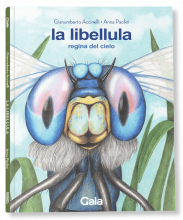Avian flu: EU prevention bears fruit
- Visualizzazioni: 2584
- Lingua:
 | Sottotitoli:
| Sottotitoli: 
- Fonte: Mostra Communication | Durata: 8,37 min | Pubblicato il: 19-10-2006
-

- Categoria: Informaciones
- Tag: Mostra Communication
- Scarica: MP3 | MP4 | alta risoluzione
- Scarica i sottotitoli :

Riproduci solo audio:
Arcoiris - TV
Several measures to prevent, detect or contain the H5N1 virus in the EU have managed to stop the virus from spreading up to now. The future evolution of the situation is difficult to foresee because the H5N1 virus is stillpresent in many countries, for example in Asia. The European Commission and the Member States constantly review the state of the disease outbreaks inthe world and adapt the surveillance and the control measures accordingly.We have visited a Hungarian farm which was the departure point for an outbreak of avian flu that spread to 28 other Hungarian farms. As a result,a million poultry fowl had to be destroyed. We illustrate the measures taken by the farmers and the Ministry for Agriculture to prevent the spread of thedisease, including biosafety rules. We also filmed the monitoring of dead wild birds in the Netherlands, whichallowed the rapid detection of highly pathogenic viruses. Also in the Netherlands, we filmed vaccination measures for domestic poultry.The video report also highlights the role of the Veterinary Laboratory Agency in London when it comes to avian flu. They receive samples from theUnited Kingdom and the rest of Europe, analyse them and work closely with affected countries in order to reach an early diagnosis and to understandhow the virus is spreading.
Interviews:Miklos Süth, Director Bacs-Kiskun County, Ministry of Agriculture and Regional Development, Hungary
Eduardo Tognon, Chief Veterinary Officer, Ministry Of Agriculture and RegionalDevelopment, Hungary
Alberto Laddomada, Unit Animal Health and Welfare, DG Health & Consumer Protection, European Commission
Ferenc Dér, Hungarian Farmer
Roy Slaterus, Project manager, Sovon, Dutch Centre for Field Ornithology, The Netherlands
Ian Brown, Head of Avian Virology, Veterinary Laboratory Agency (VLA), Weybridge, UK
Martijn Weijtens, Deputy Chief Veterinary Officer, Ministry of Agriculture, Nature and Food Quality, The Netherlands
Sandra Angelino, Dutch Veterinary
Visit the site: www.mostra.com
Download subtitles:
Interviews:Miklos Süth, Director Bacs-Kiskun County, Ministry of Agriculture and Regional Development, Hungary
Eduardo Tognon, Chief Veterinary Officer, Ministry Of Agriculture and RegionalDevelopment, Hungary
Alberto Laddomada, Unit Animal Health and Welfare, DG Health & Consumer Protection, European Commission
Ferenc Dér, Hungarian Farmer
Roy Slaterus, Project manager, Sovon, Dutch Centre for Field Ornithology, The Netherlands
Ian Brown, Head of Avian Virology, Veterinary Laboratory Agency (VLA), Weybridge, UK
Martijn Weijtens, Deputy Chief Veterinary Officer, Ministry of Agriculture, Nature and Food Quality, The Netherlands
Sandra Angelino, Dutch Veterinary
Visit the site: www.mostra.com
Download subtitles:
Per pubblicare il tuo commento, riempi i campi sottostanti e clicca su "Invia". Riceverai una email con la richiesta di conferma.



















